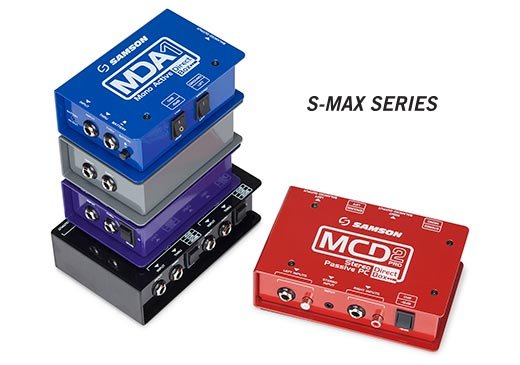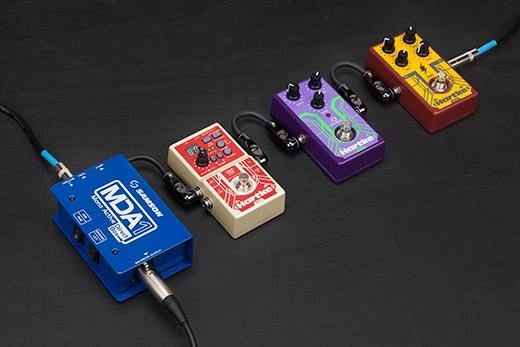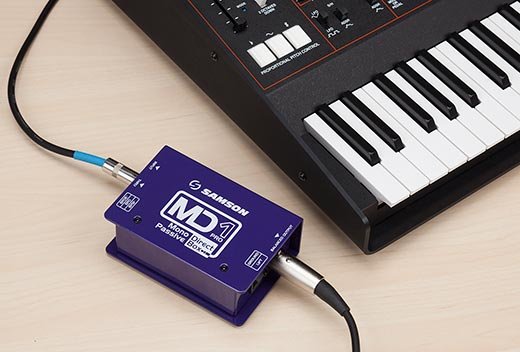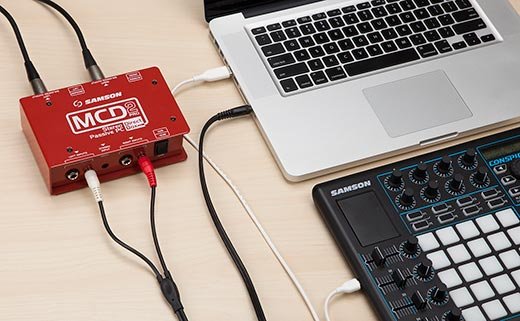Straight Talk About Direct Boxes — Part 2

Previously: Straight Talk About Direct Boxes — Part One
Understanding Impedance: Z = R + X
In the world of audio electronics, impedance (Z) is the total opposition to an audio signal flowing down a cable. This opposition is made up of resistance (R) and reactance (X). Without getting too technical, the important difference is that reactance is frequency dependent, while resistance is not. By now, you may be thinking, “OK. So why are there Hi-Z and Lo-Z signals to begin with?” The answer is both have their advantages, and each has a particular use. Our discussion here is focused on line, mic and instrument signals. Speaker runs are a special case, carrying a low-impedance, high-level signal.
High-Impedance (Hi-Z)
High-impedance can typically be thought of as carrying a greater signal level. This means that the receiving amplifier does not have to work as hard to boost the signal to an optimum level. This higher signal level creates a better signal-to-noise ratio, and therefore the existing noise on the line is not being boosted as much either. This is what makes the Hi-Z format ideal for connecting an electric guitar to an amplifier and other short distance connections where signal strength is important. Unfortunately, Hi-Z connections have their weaknesses as well. As the cable length increases, these signals are more prone to radio frequency (RF) interference, increased noise and the degradation of high-frequency components in the sound. For this reason, Hi-Z unbalanced connections are usually limited to a maximum of 18.5′ (or under 6m).
Low-Impedance (Lo-Z)
Low-impedance can be thought of as carrying a lesser signal level than its Hi-Z counterpart, but can do so over a longer distance without creating any additional noise or introducing any adverse audio effects. Lo-Z signals are also less subject to crosstalk interference from other audio cables, so in a concert venue multiple channels of Lo-Z audio can be carried from the stage out to the mixing console using a single “snake”. Because the signal strength is lower, the receiving amp must work harder to bring the signal level back up. This is one of the reasons why the quality of the mic preamps on the input channels of a mixing board is so important to many audio engineers and sound professionals.
Instead of audio signals and cables, think instead of water flowing through a garden hose. With no nozzle on the hose, the water is free to flow the length of the hose with very little resistance/impedance, analogous to a Lo-Z signal. By placing your thumb into the output of the hose, you will added resistance and impede the flow of the water. But the water that does escape will do so at a greater pressure level, as in a Hi-Z signal.
Achieving Balance
Not only are Hi-Z and Lo-Z different types of signals, they are carried by different types of cables. Again, each one is particularly well-suited for its specific purpose.
Unbalanced Cables
By and large, the audio output of most electric guitars, electric basses, drum machines, grooveboxes, keyboards, MP3 players and computers is an unbalanced Hi-Z signal. These signals are carried via cables with only two conductors: the audio signal and a combined shield/ground. The shield prevents the cable from becoming an antenna and attracting all sorts of noise. Unbalanced cables lose their ability to reject noise as their lengths increase; because of their higher impedance level, the original signal also begins to degrade as cable lengths increase—beginning with the upper-end frequencies that have shorter wavelengths. As mentioned above, unbalanced cable runs should be kept to under 6m, or roughly 18.5′.
Balanced Cables
By contrast, balanced audio cables uses three conductors. The first two carry the audio signal; the first with a positive polarity, the second with a negative polarity. The third element is once again the shield/ground. The lower impedance provides less resistance, so the signal can travel further with less degradation of the harmonic content. While the two audio conductors do attract noise over longer cable lengths, they both attract the same noise; therefore the noise on the positive and negative conductors is cancelled out at the receiving end. This allows the balanced audio cable to enjoy much longer cable runs than unbalanced cables.
Real-World Use
Generally speaking, you want to send the sound engineer the signal at the last point possible in your signal chain; after your instrument, preamp, effects, etc. Here are a handful of examples of using a direct box in a few common applications:
Example 1: Using a direct box live with a bass guitar
This is one of the most common uses of a direct box. The output of the bass is plugged into the input of the direct box, and the output of the direct box is plugged into the sound system via the audio snake. However, in this example, the bass player can no longer hear himself on stage, except for through the stage monitors—which generally have a diminished bass response. The solution is the Thru jack, available on nearly all of Samson’s S-Max Series Direct Boxes. This extra jack allows you to send the signal from the bass to the onstage bass amplifier, while the output as to the sound system.

Example 2: Using a direct box live with a guitar preamp or pedalboard
In the old days, you plugged your guitar straight into the amp, turned up the gain, volume and tone controls, and that was it. Modern amps and multi-effect pedalboards may now feature a preamp loop or an emulated speaker output. Using a preamp loop, the performer can insert the direct box into the loop. The preamp sound will enter the direct box and the output can be connected to the audio snake. The Thru jack provides a mirror image of the preamp signal and can continue on to the power amp stage, or any other monitoring system.
Example 3: Using a direct box in the studio with a workstation synthesizer
Due to their onboard effects and stereo samples, most modern keyboards have stereo outputs. In addition, most keyboards will be monitored through headphones—or even through the control room monitors. So in this case, it’s easy to simply connect the Left and Right outputs from the workstation keyboard to the left and right inputs of the direct box; the left and right outputs feed directly to the console. Performers who use multiple keyboards can also use a stereo direct box with their on-stage mixer.

Example 4: Using a stereo direct box while DJing with a laptop
If you have been hired to DJ a wedding or at a restaurant and are planning to use your laptop, you may have issues interfacing with the main front-of-house (FOH) PA system. Samson’s MCD2 Pro Stereo Passive PC Direct Box allows you to take the unbalanced output from the computer and send a balanced cable to the mixer or PA system. If you use a splitter cable, you can monitor your mix or use the parallel jacks to send the mix to a headphone amp. So in this case, it’s easy to simply connect the 1/8″ output (headphone or line) from your laptop to the 1/8″ input of the MCD2 Pro direct box; the RCA jacks connect to a headphones amp; the left and right XLR outputs feed directly into the console or PA system.

Own the Moment
By now, you may be wondering, “Why is a direct box my responsibility?” The truth is, most venues, sound companies and engineers own a few of their own direct boxes. But owning your own direct box(es) assures that there is always one available for your use; a direct box that you have personally chosen to meet your needs and performance expectation. And who knows? When they see you have your own Samson S-Max Series Direct Boxes, you might even get a little extra respect from the sound crew—and that alone may be worth the cost.
